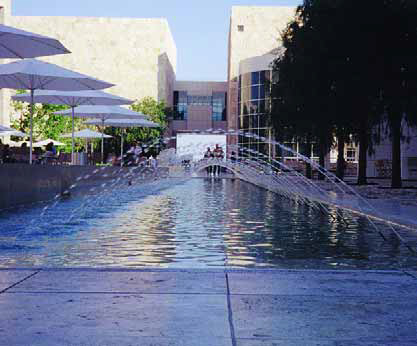ARTICLES
Advance Search
Aquatic Health
Aquatic Health, Fitness & Safety
Around the Internet
Aquatic Culture
Aquatic Technology
Artful Endeavors
Celebrity Corner
Life Aquatic
Must-See Watershapes
People with Cameras
Watershapes in the Headlines
Art/Architectural History
Book & Media Reviews
Commentaries, Interviews & Profiles
Concrete Science
Environment
Fountains
Geotechnical
Join the Dialogue
Landscape, Plants, Hardscape & Decks
Lighter Side
Ripples
Test Your Knowledge
The Aquatic Quiz
Other Waterfeatures (from birdbaths to lakes)
Outdoor Living, Fire Features, Amenities & Lighting
Plants
Ponds, Streams & Waterfalls
Pools & Spas
Professional Watershaping
Structures (Editor's Notes)
Travelogues & History
Water Chemistry
WaterShapes TV
WaterShapes World Blog
Web Links
Around the Internet
Aquatic Culture
Aquatic Technology
Artful Endeavors
Celebrity Corner
Life Aquatic
Must-See Watershapes
People with Cameras
Watershapes in the Headlines
As watershape design expands beyond the mostly recreational traditions of the recent past, more of us are being asked these days to design water elements that work more decoratively and serve to frame, reflect and otherwiseaccentuate or accompany art pieces. In these situations, a pool, fountain or basin design is visually driven by the artwork, and whether the project is done for a private residence or a commercial complex, the results can be wonderfully dynamic. In most cases, requests for this design approach come from an owner who has a particular piece in mind; in a few other cases, the artist will commission a watershape to accompany a main attraction of his or her devising and becomes a key participant in the design process. All in all, I see this as another manifestation of a trend in which
For a good while now, I’ve been on the lookout for books that define the health benefits of swimming and other forms of aquatic exercise. I’ve largely come up empty, with only a couple of worthy exceptions. It’s been important to me for two reasons: First, I’m convinced (as others in this magazine have argued) that the watershaping industry is doing both itself and its clients a disservice by not promoting the remarkable healthfulness of aquatic activity. I think this is a deficit we desperately need to address – and also that this effort must begin on a solid base of knowledge and fact. Second, as I progress through my forties, I’m finding that running is becoming more and more difficult because of hip problems; my intention is to turn to the water to maintain my physical fitness, but I want to know more about it and how to do it right. So far, the best resource for information about swimming I’ve found is The Complete Book of Swimming by Dr. Phillip Whitten (Random House, 1994). It’s older than some other volumes I’ve found, but I think it’s the best because
What’s the use of knowing about history? For many of us, the answer to that question seems so obvious that it comes as a shock to find out just how many people in the watershaping and landscape fields don’t grasp the all-encompassing significance of our collective past – but it shouldn’t. Using my own career as an example – and even though I now spend a considerable amount of my time teaching professionals and university students all about art and architectural history – I confess that I waltzed through more than a few early years as an aspiring landscape architect and watershaper in blissful ignorance of
Where I work in the northeastern United States, several species of trees and shrubs have been staples of residential landscape design for so long that stands of these arboreal mainstays (very often deployed by firms not known for their creativity) have become something of a visual cliché. Through the years, however, I’ve found that even these shopworn landscape icons can be used in beautiful and often surprising ways that seem perfectly suited to their environments while also making
As watershape designs have become more creative, more competitive and ultimately more valuable to our clients than they once were, it’s natural that we have started paying more attention to protecting our output – what some call our “intellectual property.” This is indeed a large and important issue for many people in our business, virtually to the point where watershapers are now facing the same sorts of concerns that have preoccupied architects and landscape architects for decades. And we’ve caught up with our colleagues at a bad time: With technology being what it is now, the opportunities for
I’m sure many of you have noticed by now that we’ve been devoting some of WaterShapes’ pages to articles that in one way or another shine a light on the health benefits of swimming and other forms of aquatic activity. We’ve done so in the firm belief that the information is important and needs to be
In December 2004, WaterShapes introduced ‘The Platinum Standard,’ a registry of projects that embodies watershaping…
In December 2004, WaterShapes introduced ‘The Platinum Standard,’ a registry of projects that embodies watershaping at its finest. Now, as part of our celebration of the magazine’s 100th Issue, Eric Herman offers ‘The Platinum Standard II,’ a fresh set of 20 projects that have graced the pages of the magazine in the past three-and-a-half years – projects that demonstrate clearly that watershaping has become an art form in its own right. I’ll never forget the day Jim McCloskey suggested starting a magazine on systems that contain and control water. We were walking near his home in Woodland Hills, Calif., when he broached the idea, saying it had come to him as something of an epiphany while
In December 2004, WaterShapes introduced ‘The Platinum Standard,’ a registry of projects that embodies watershaping…





















Increasing Access